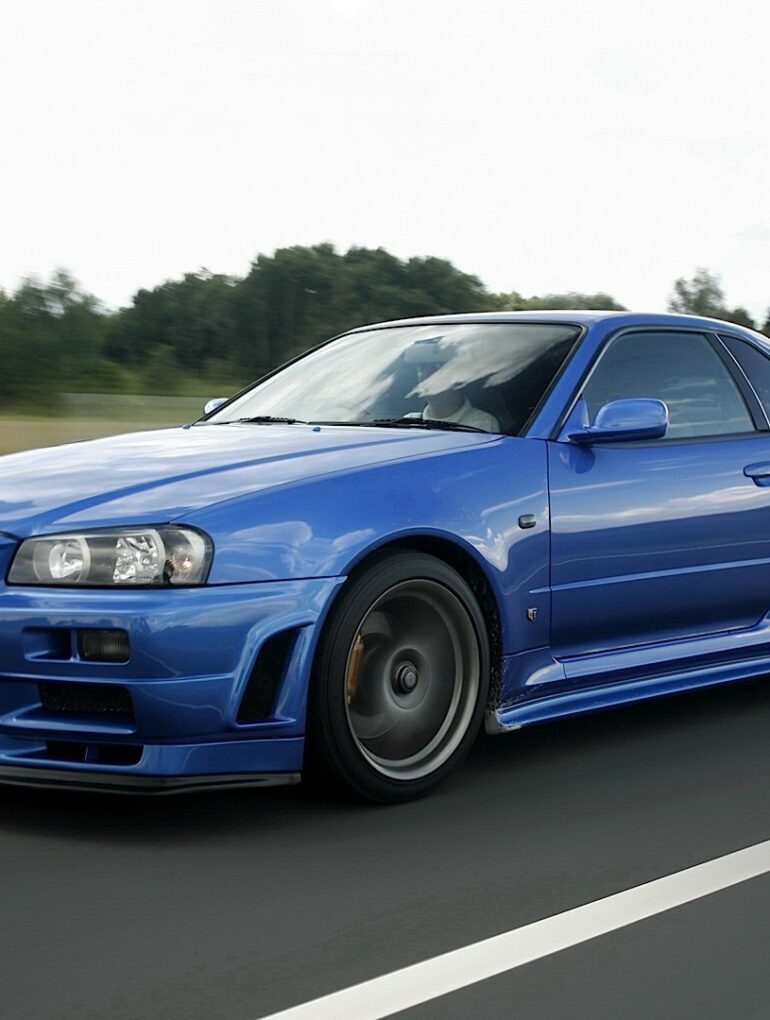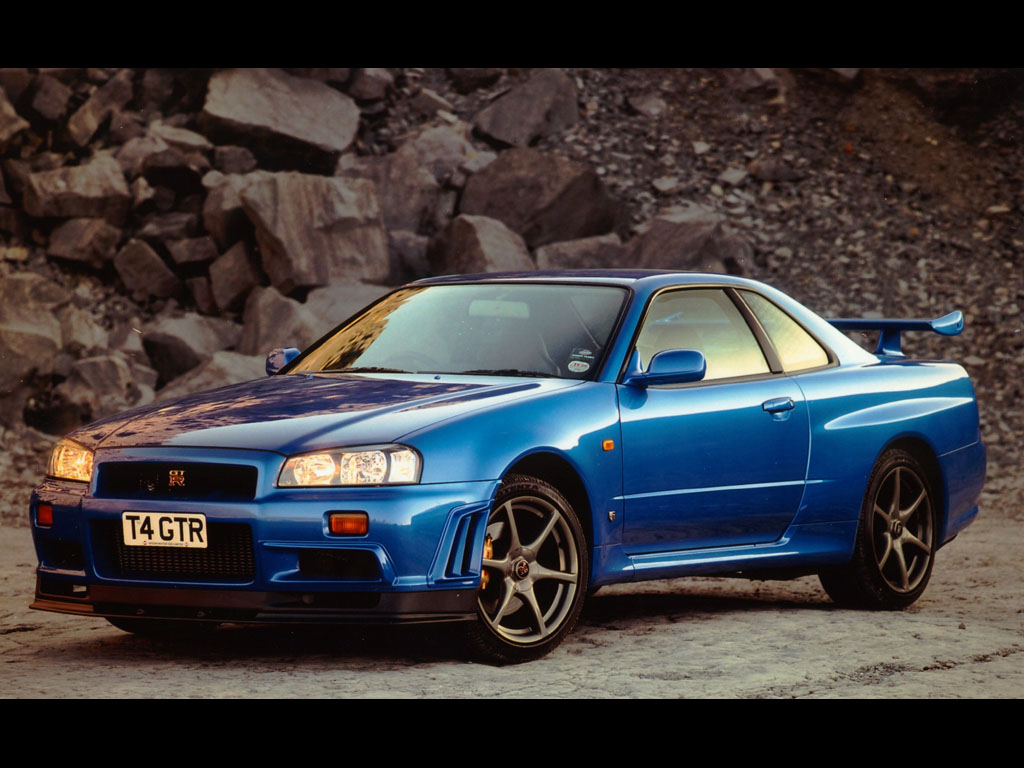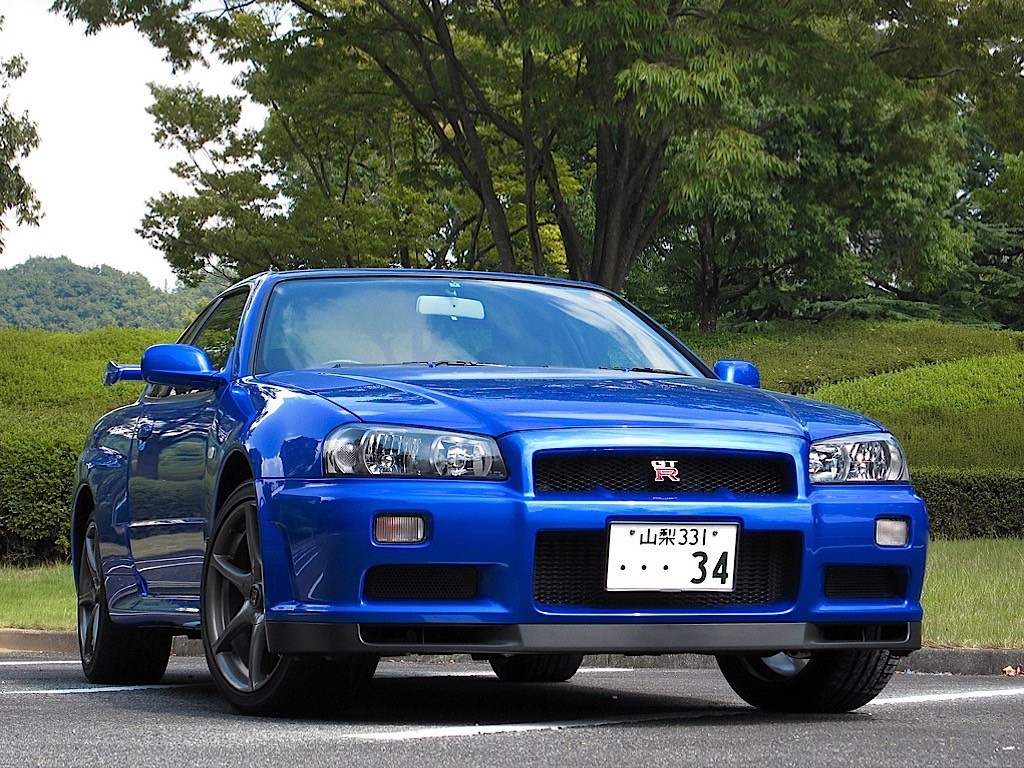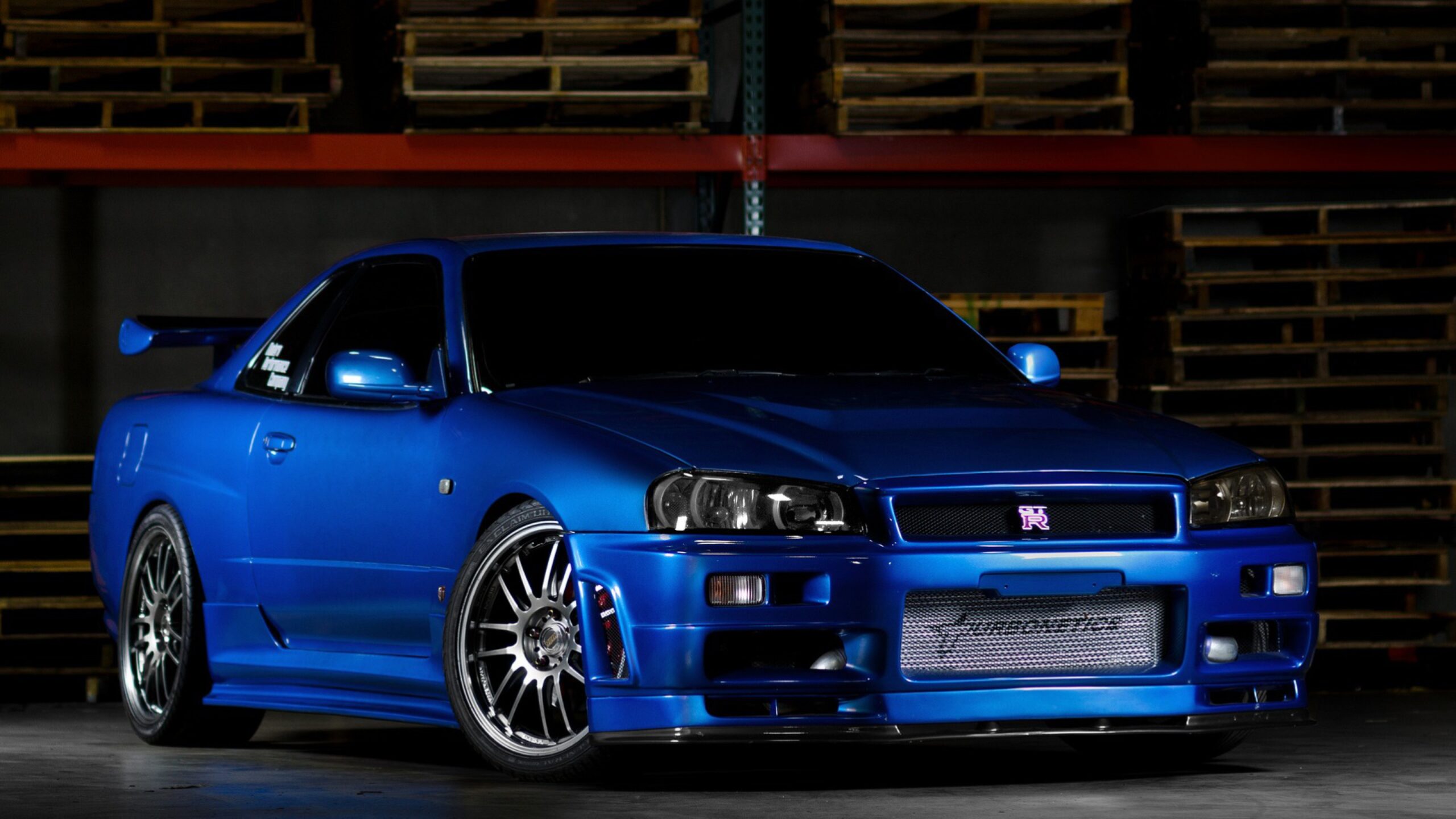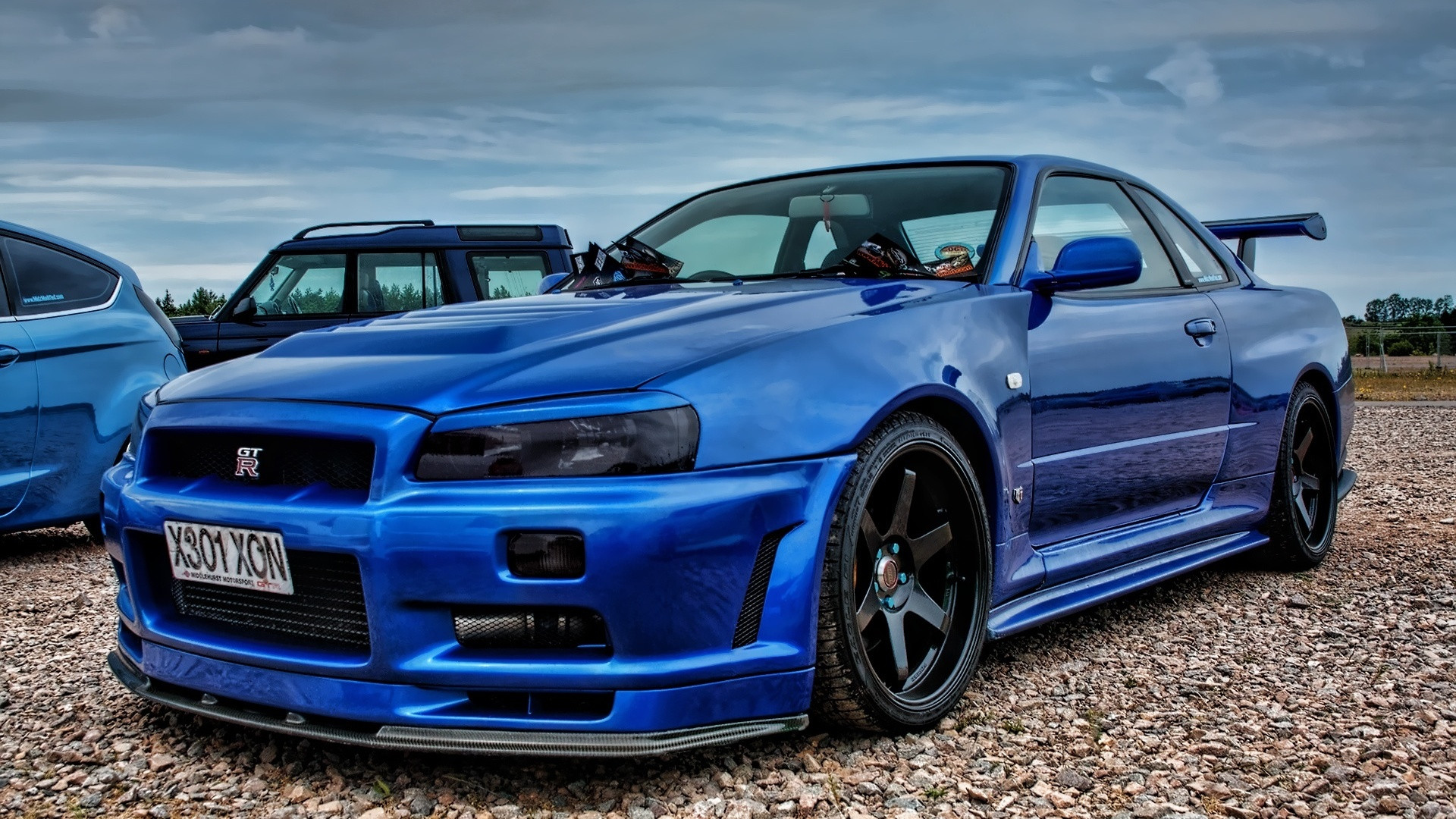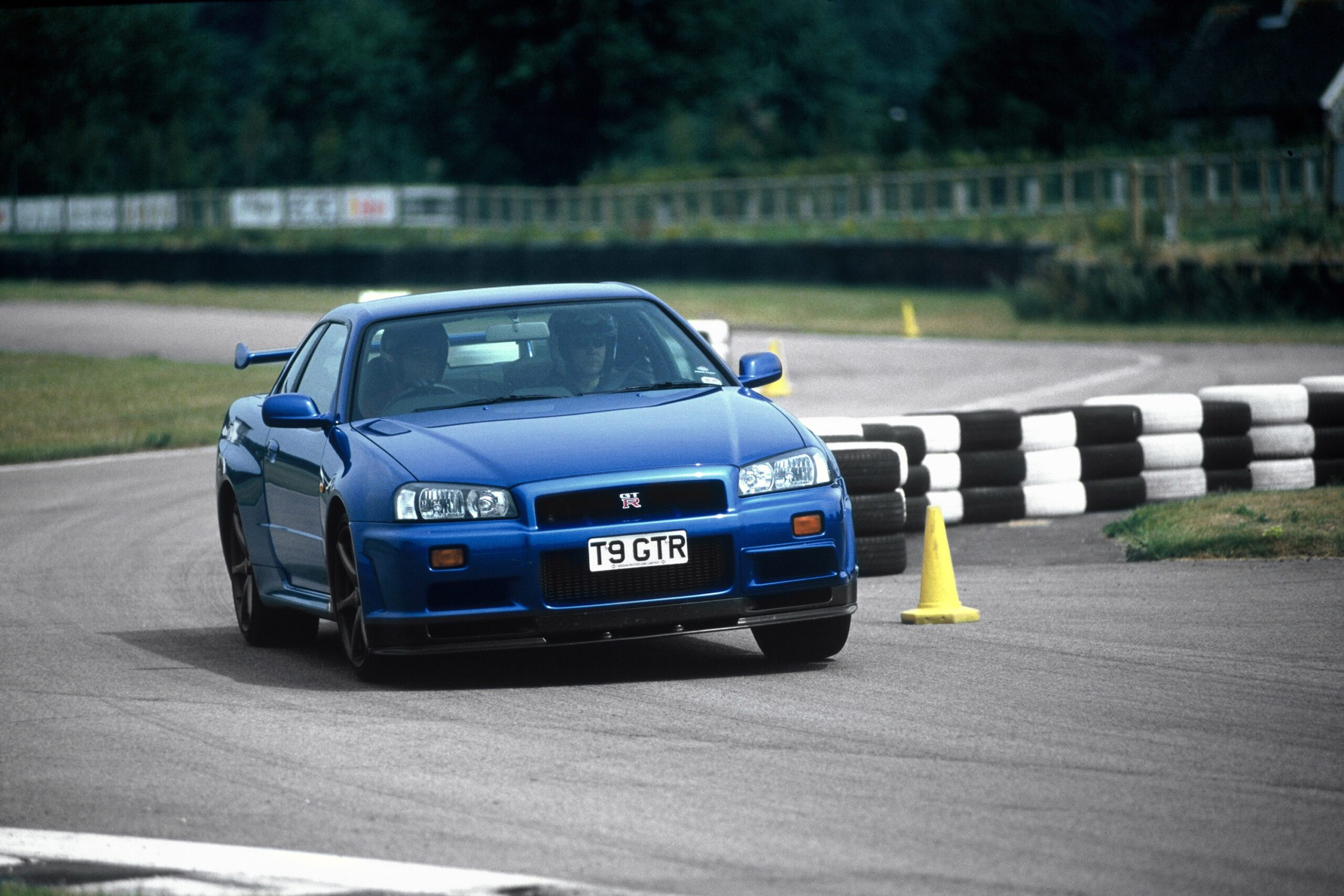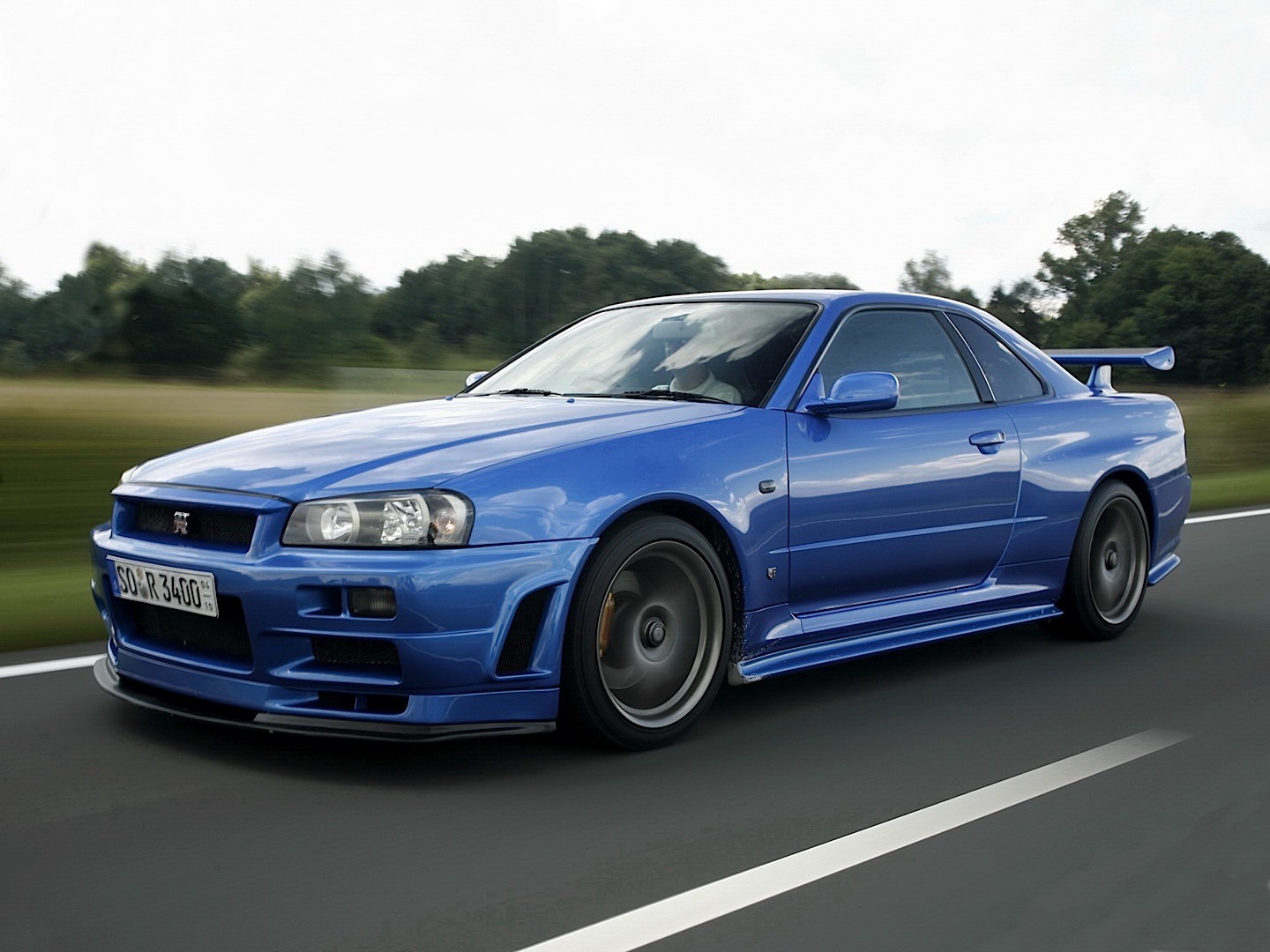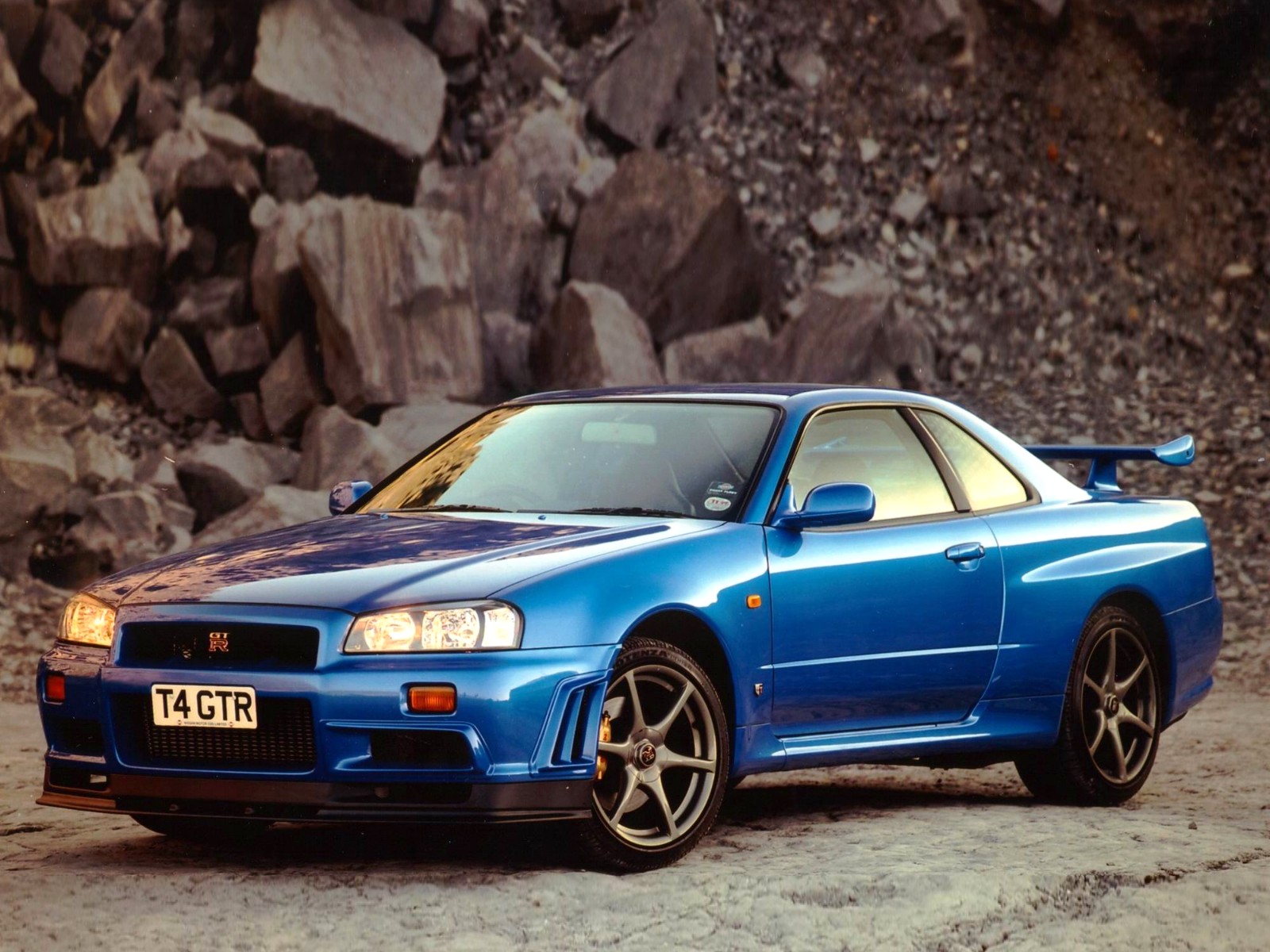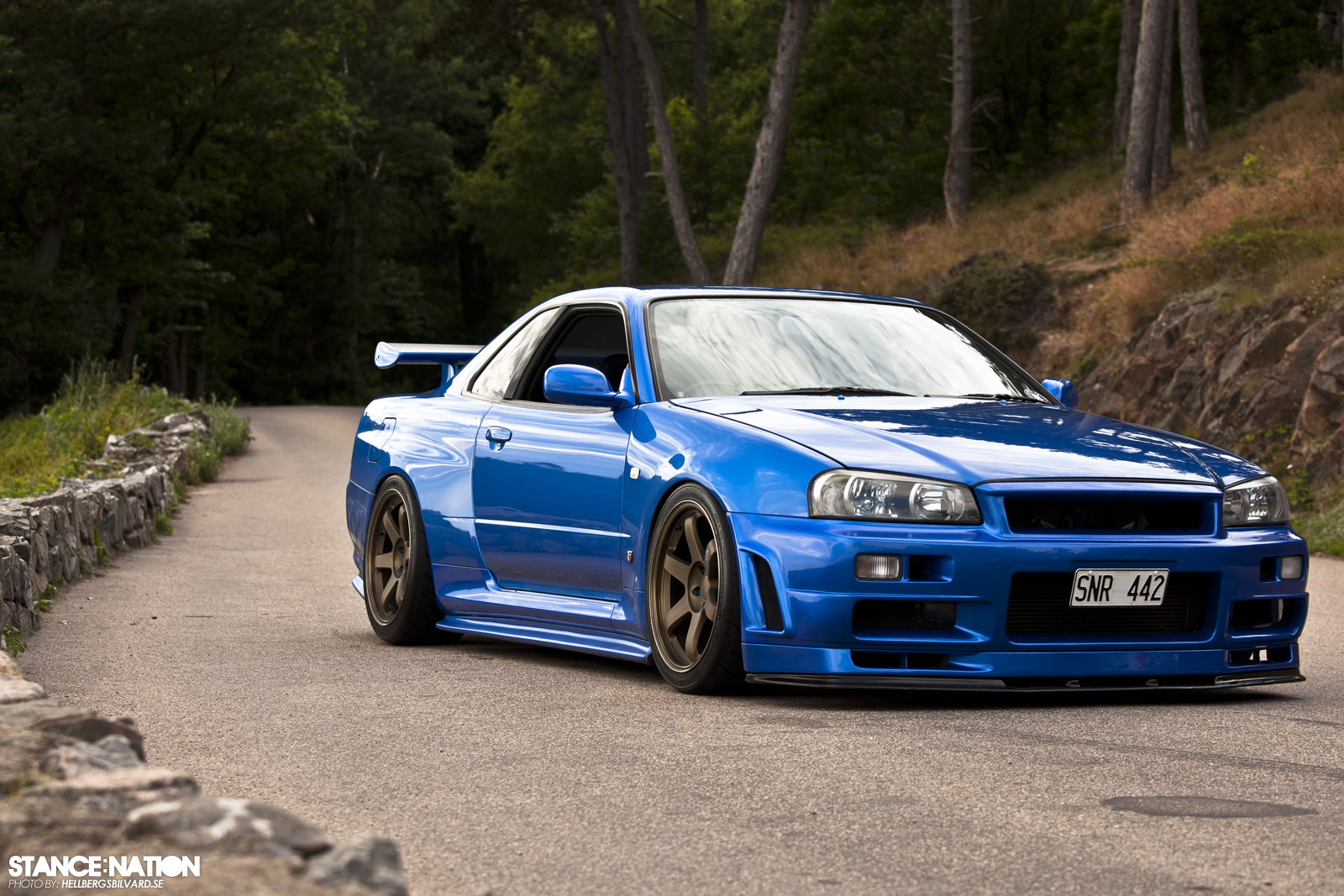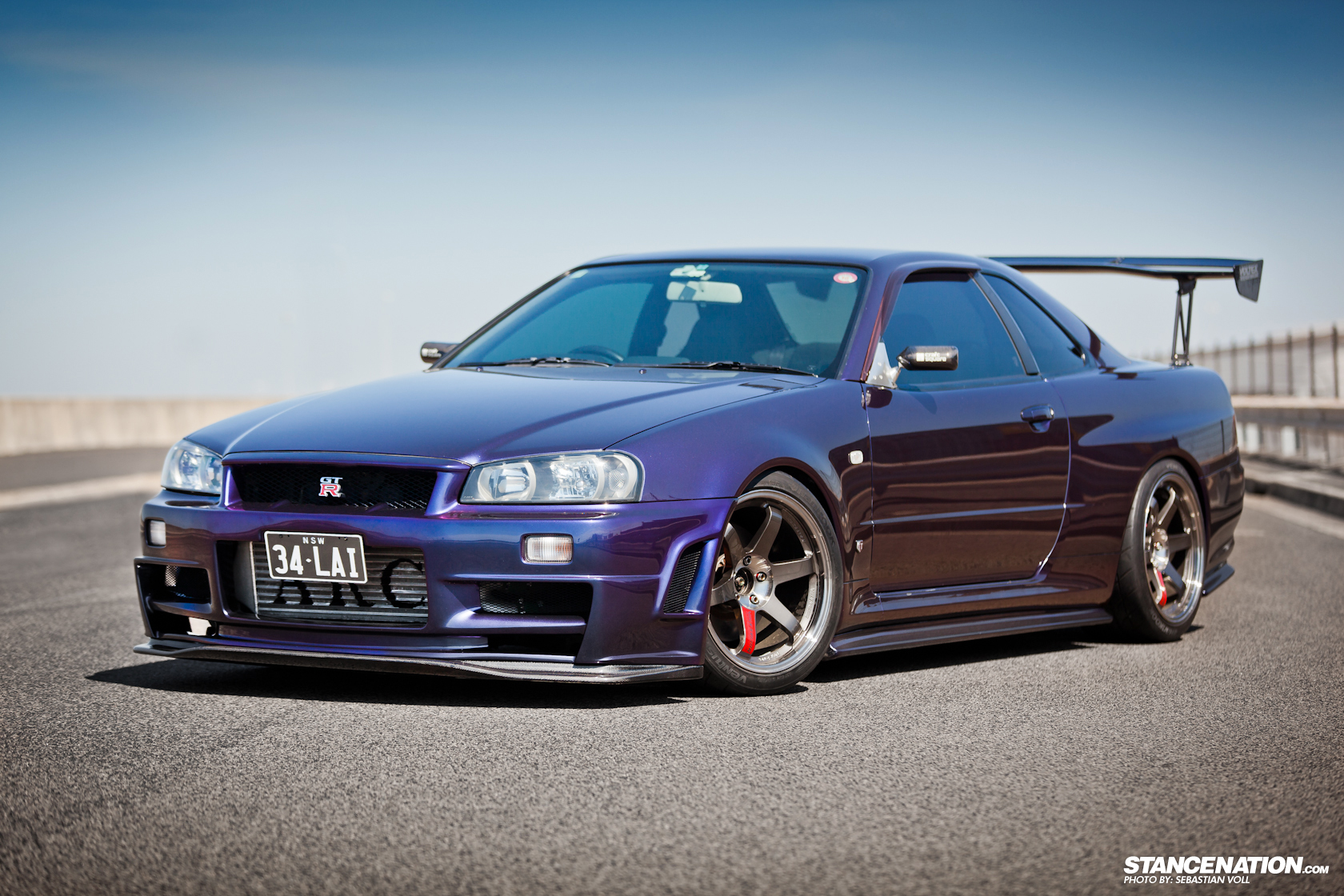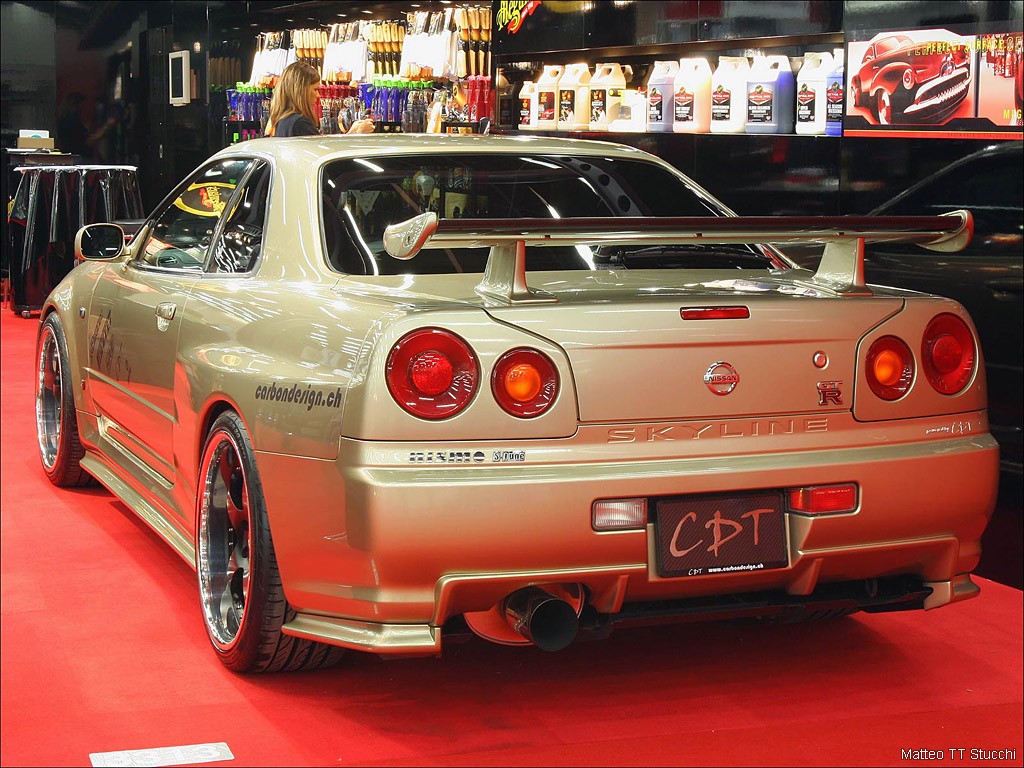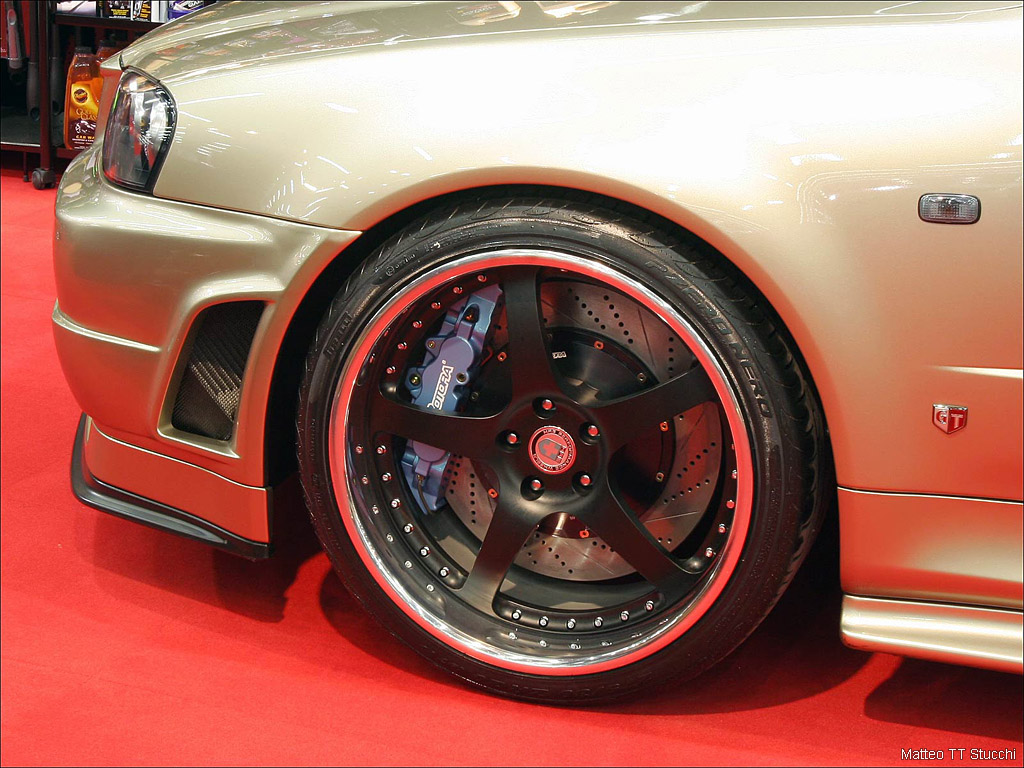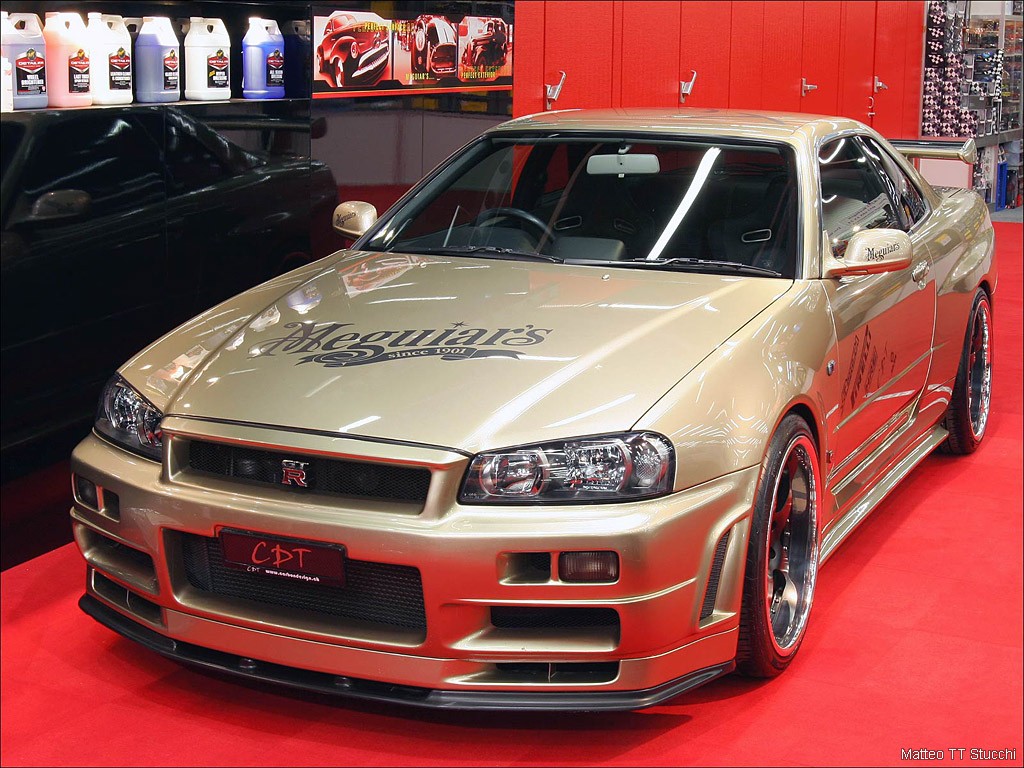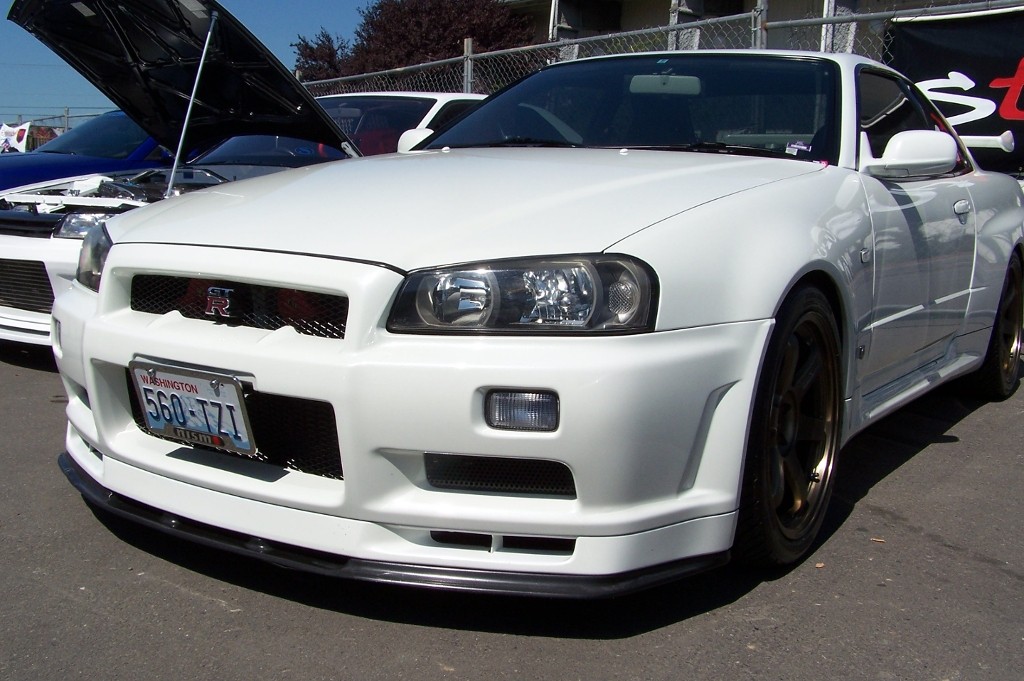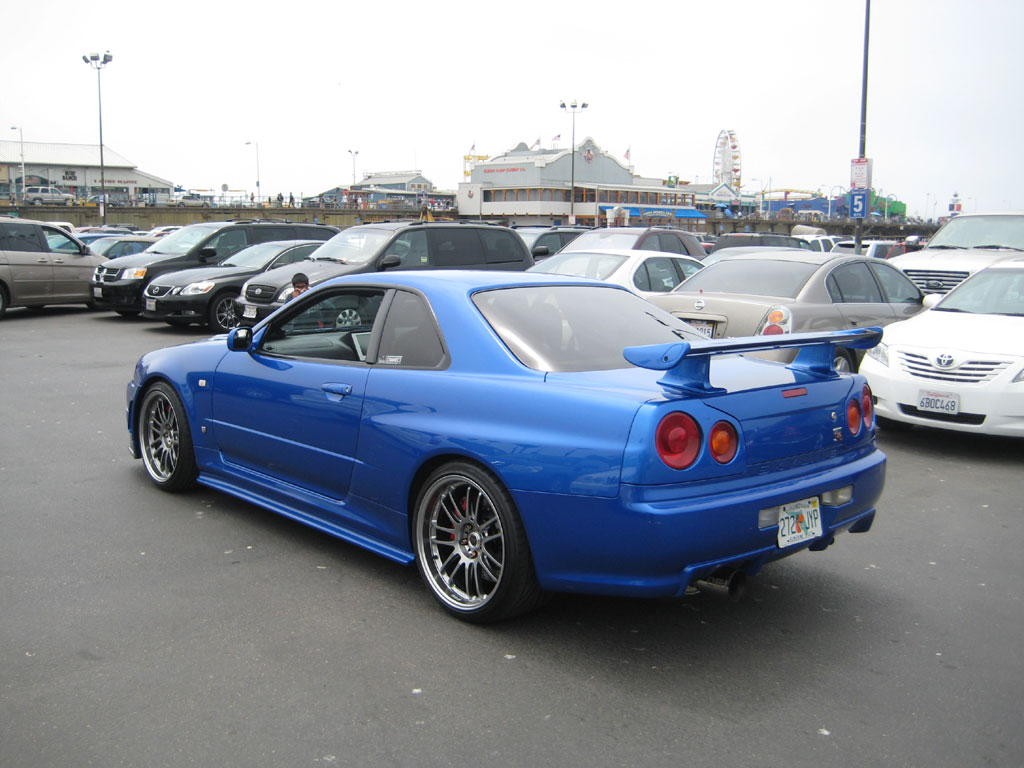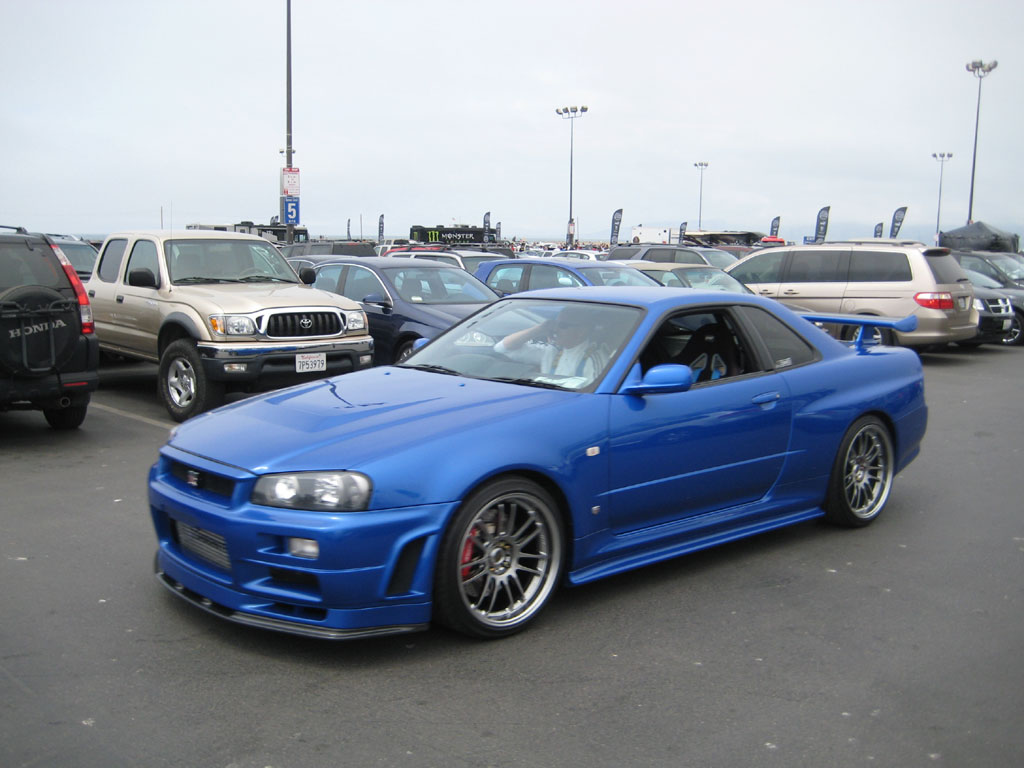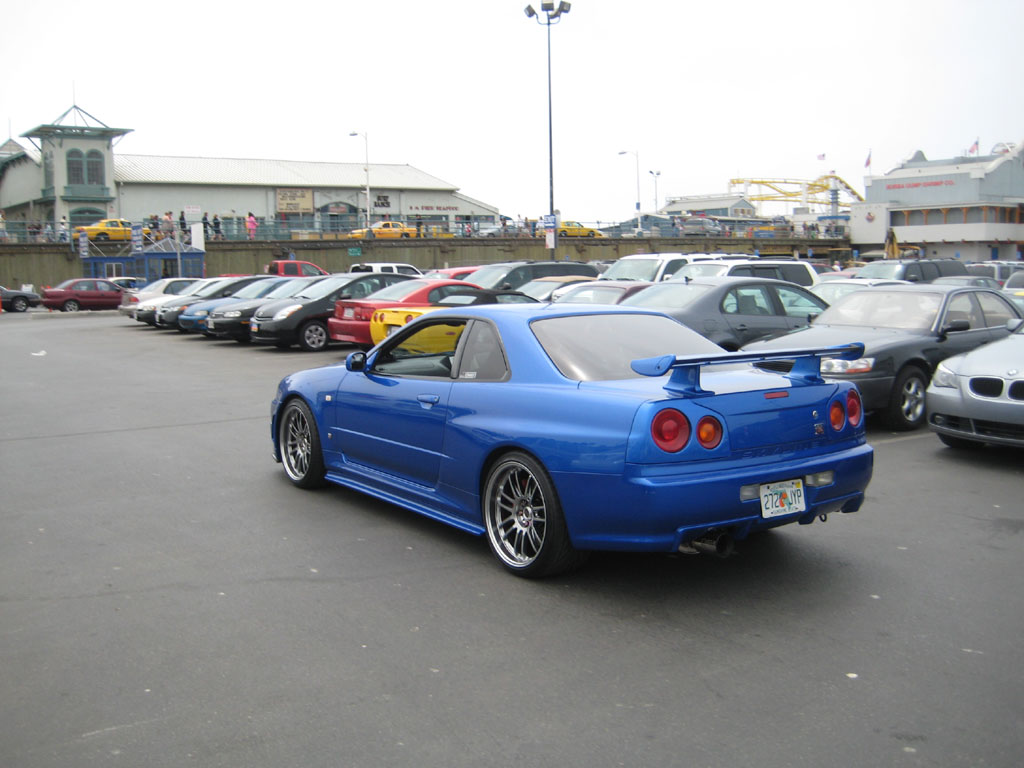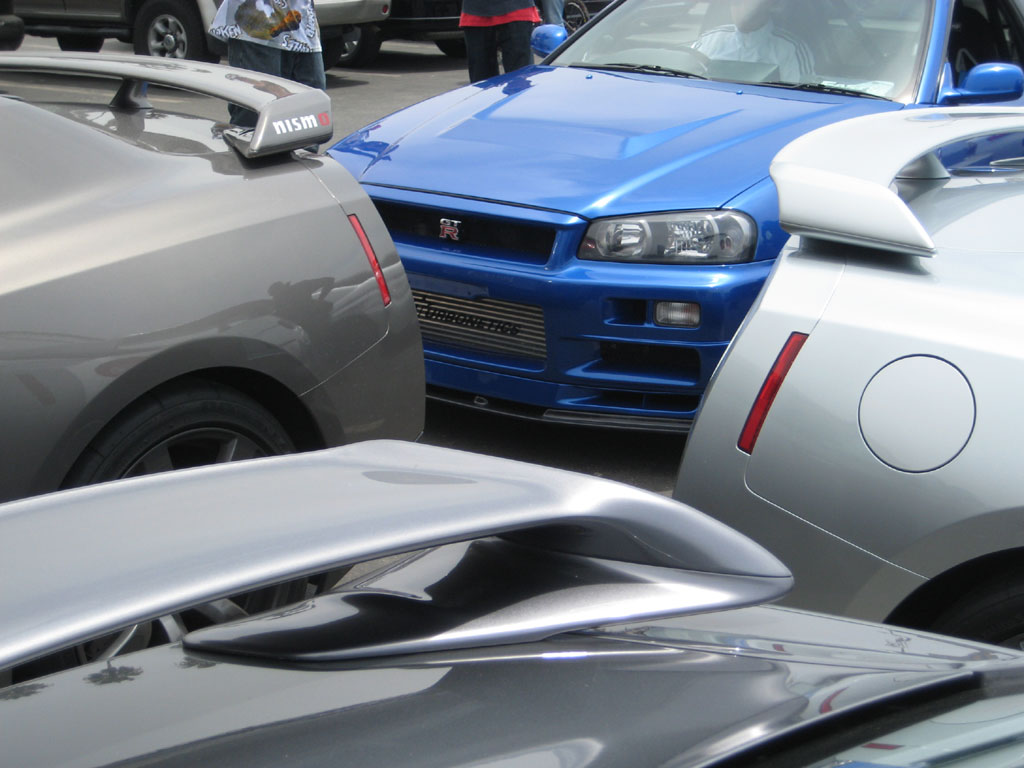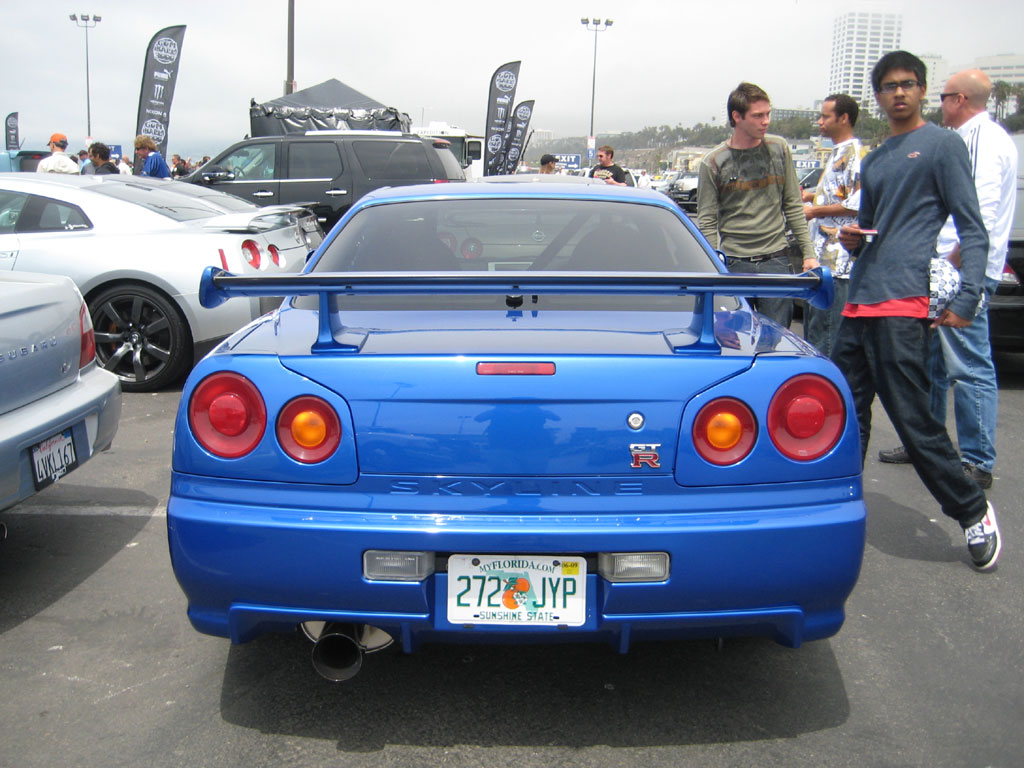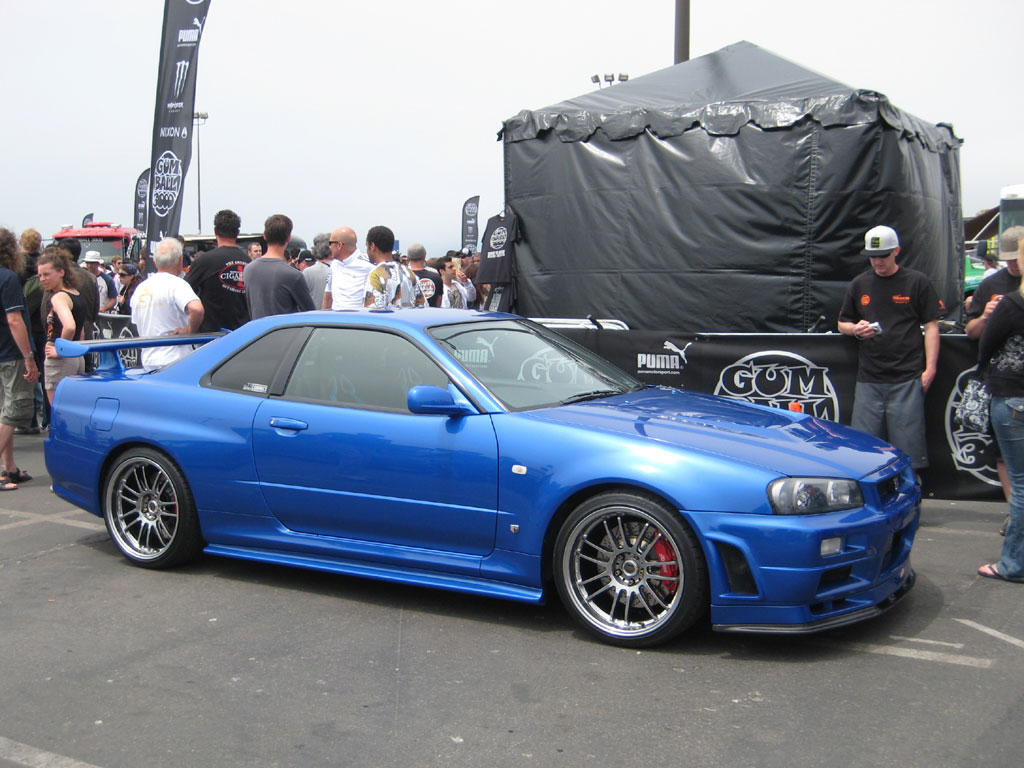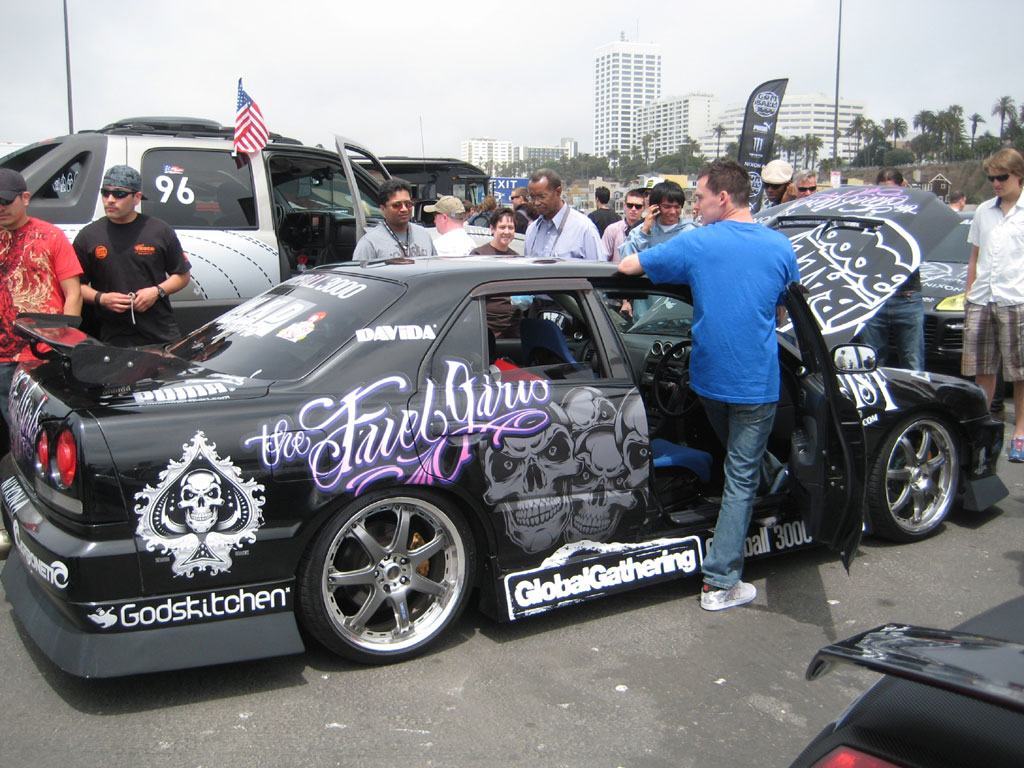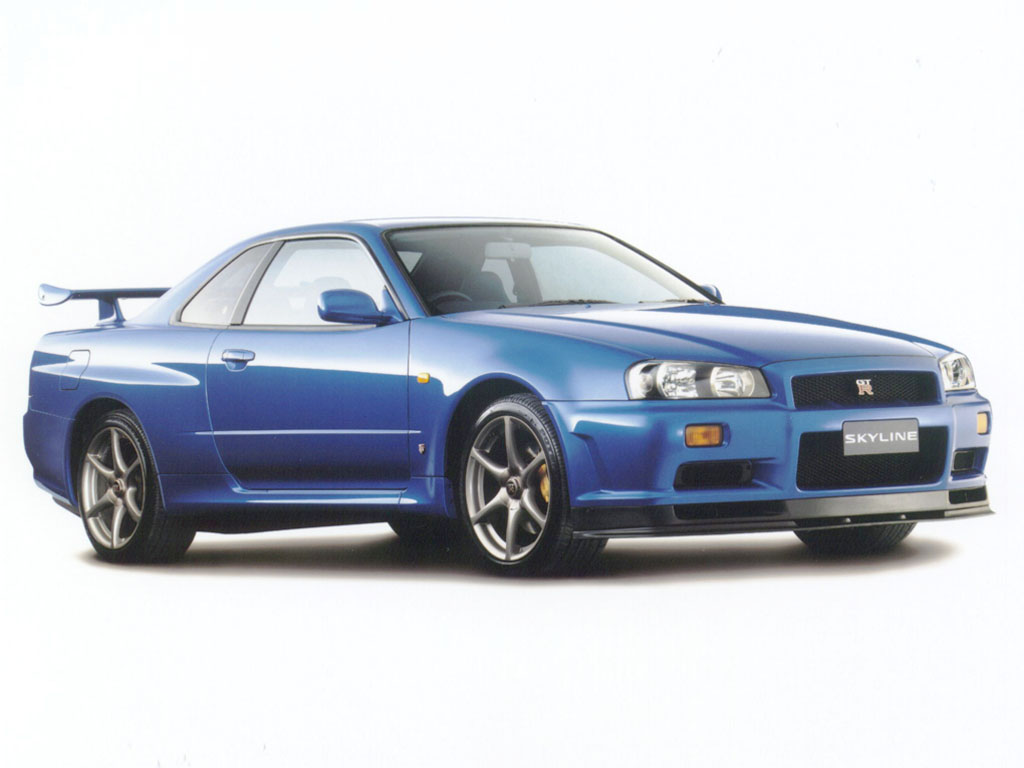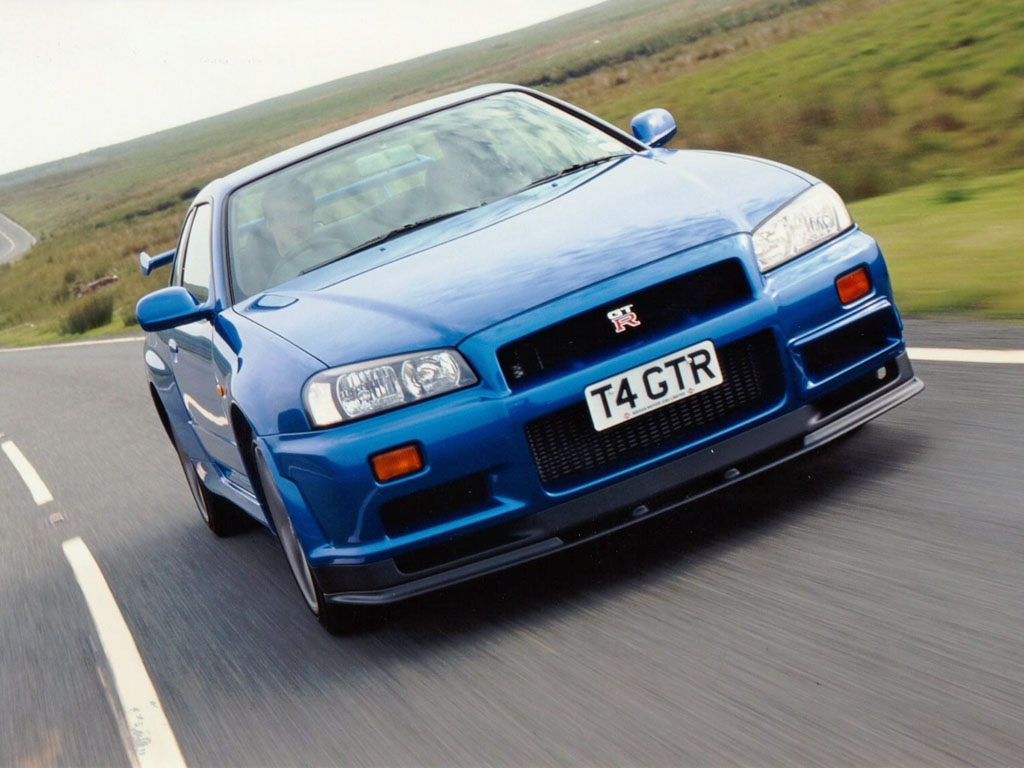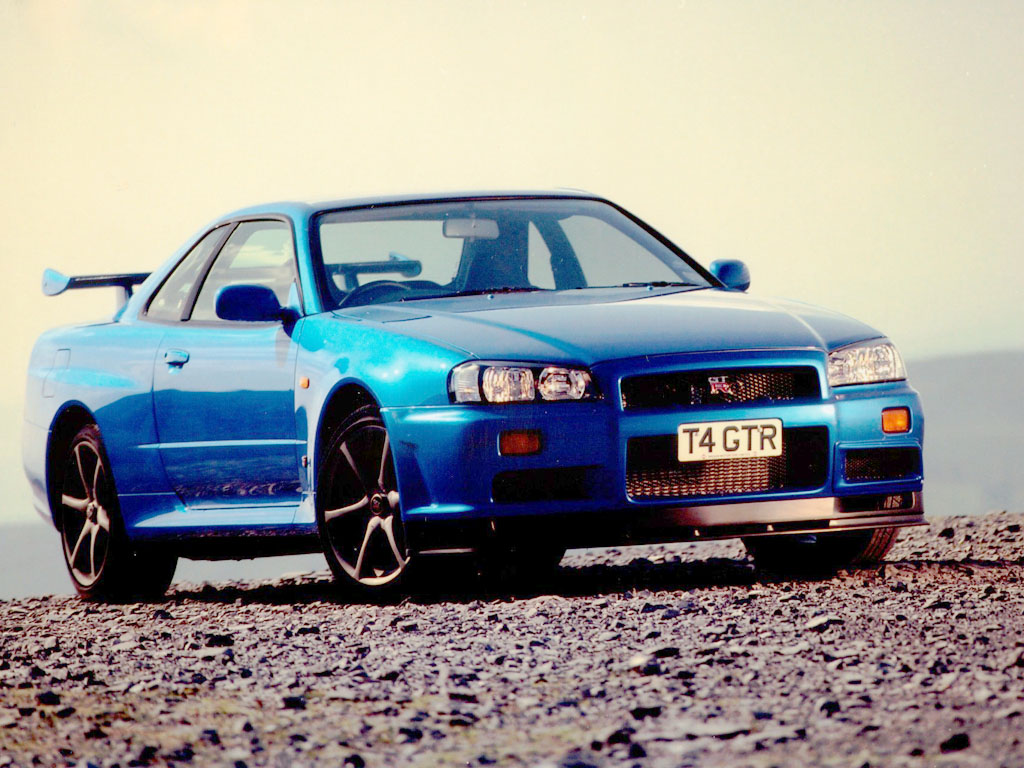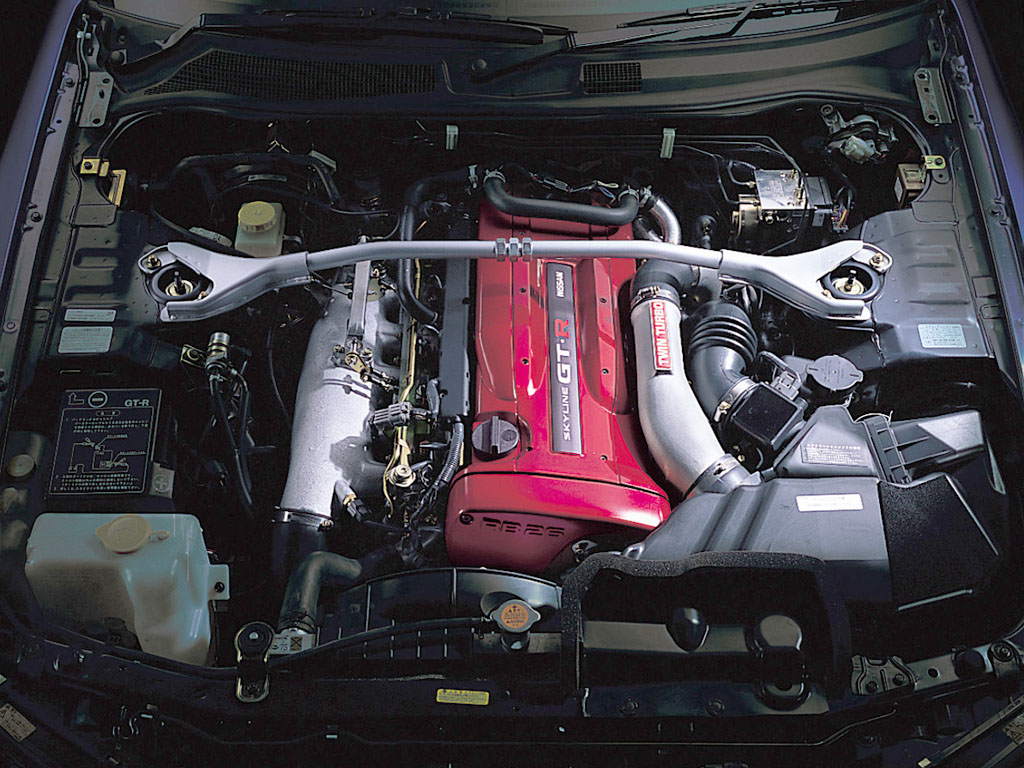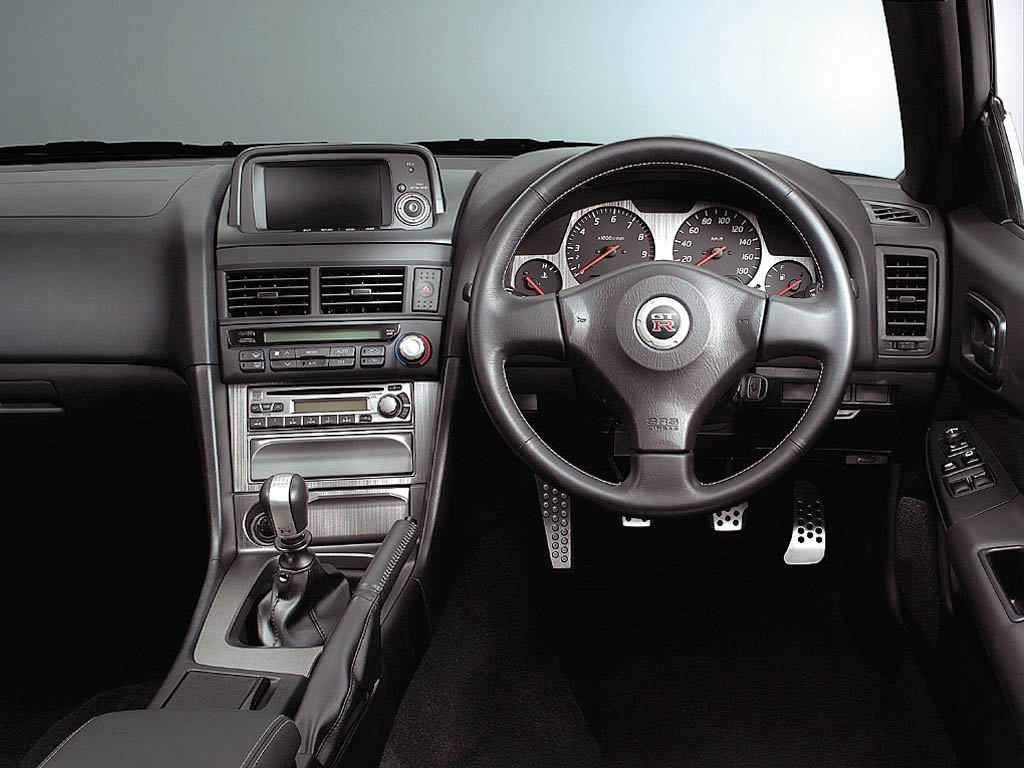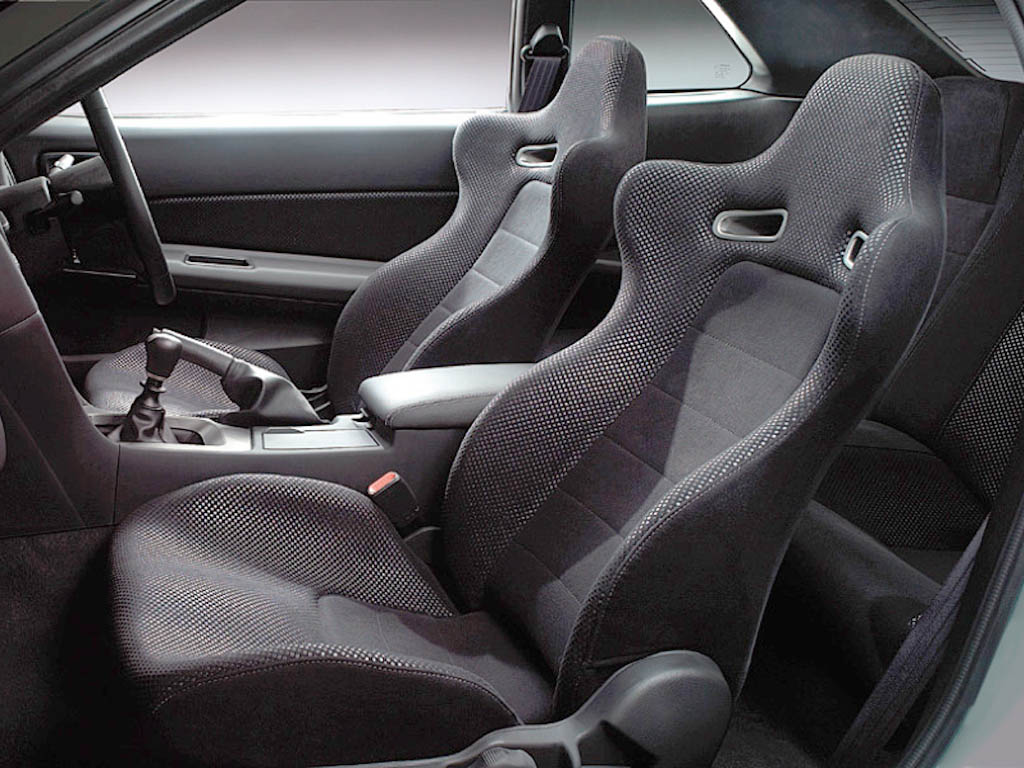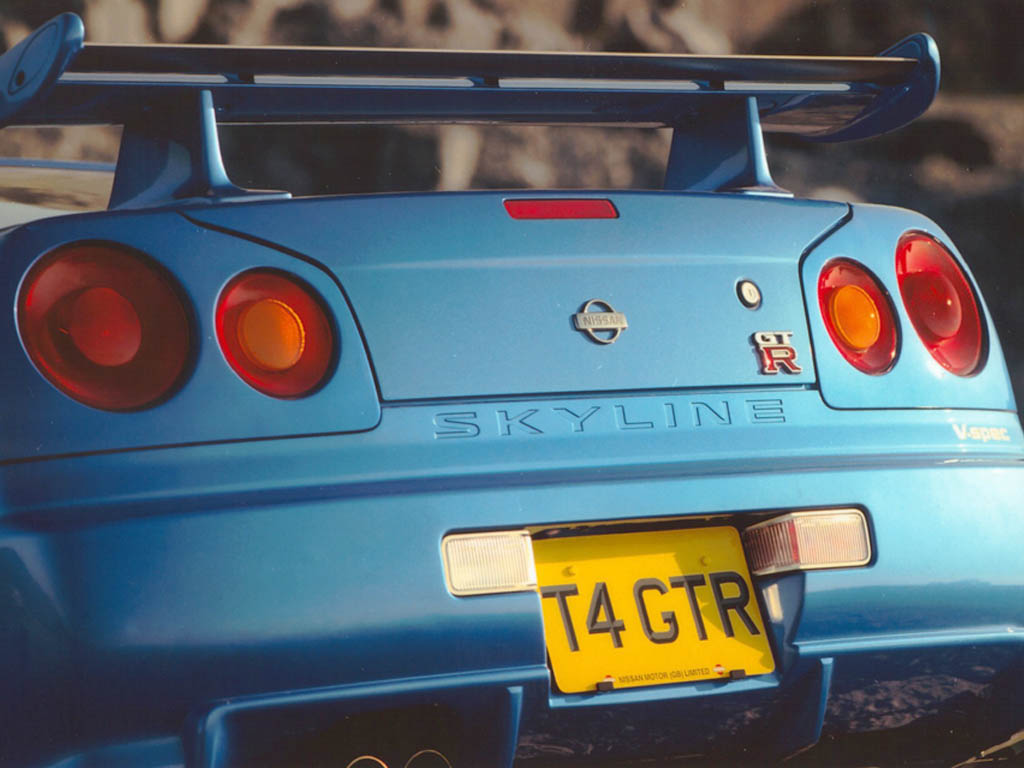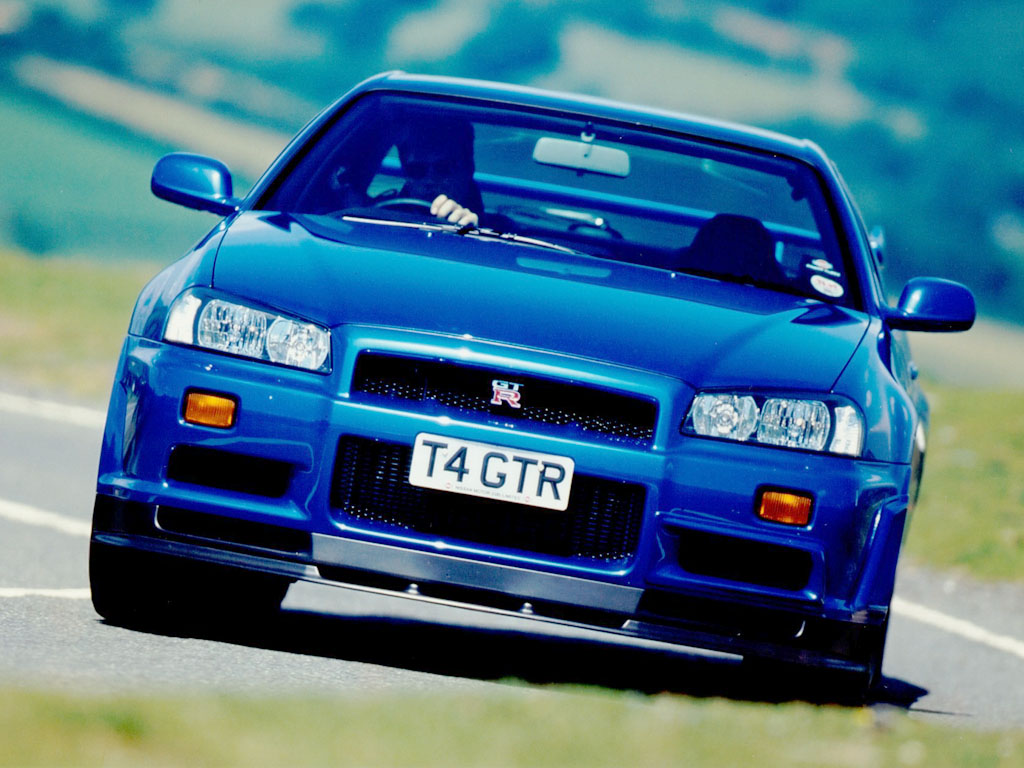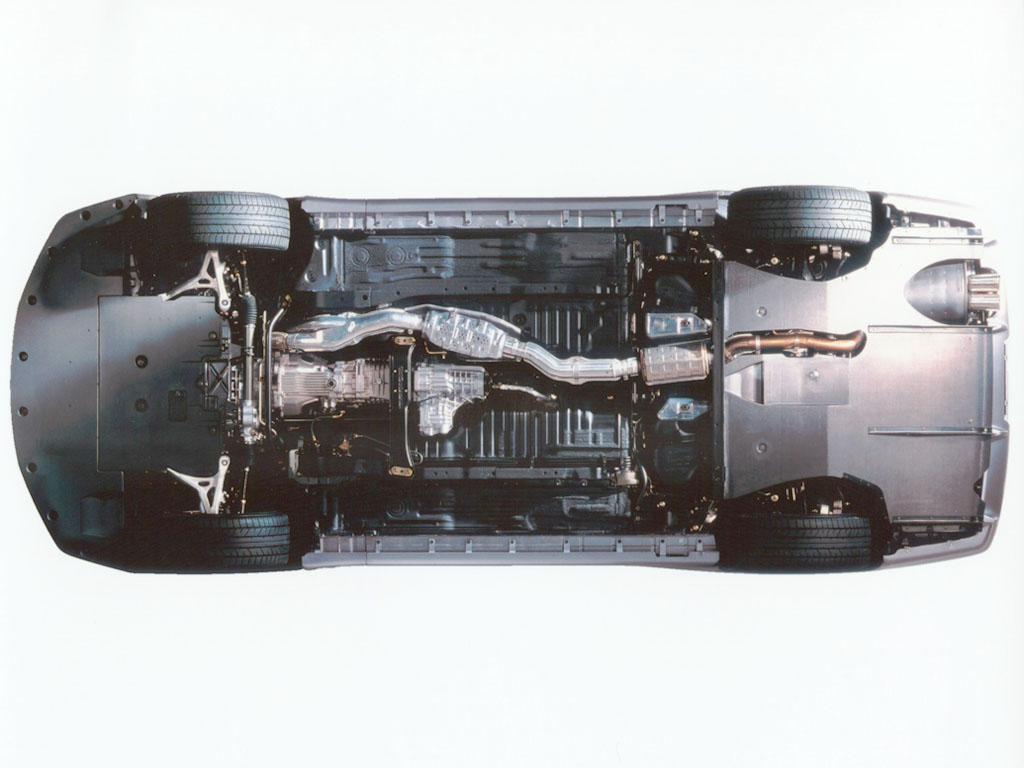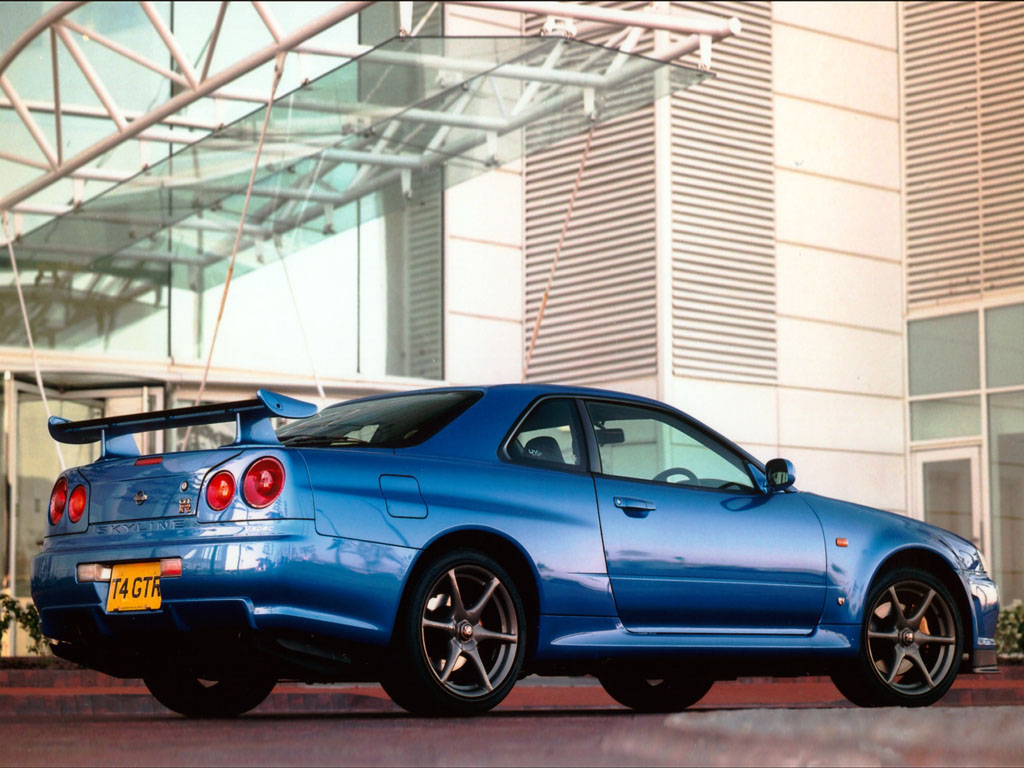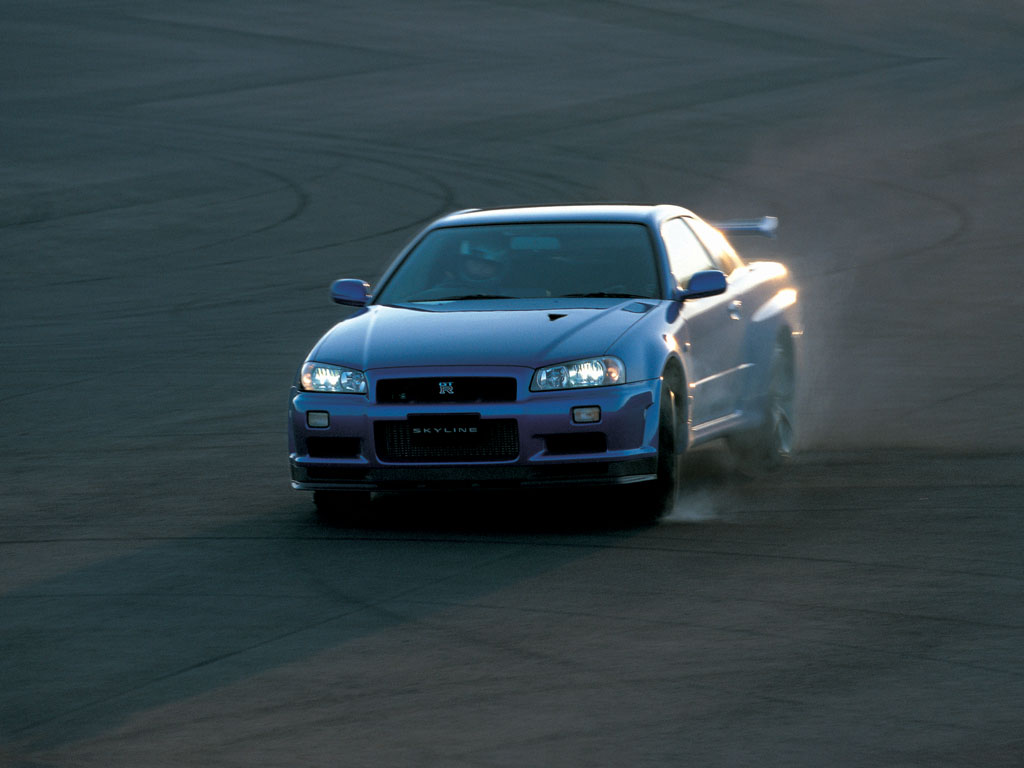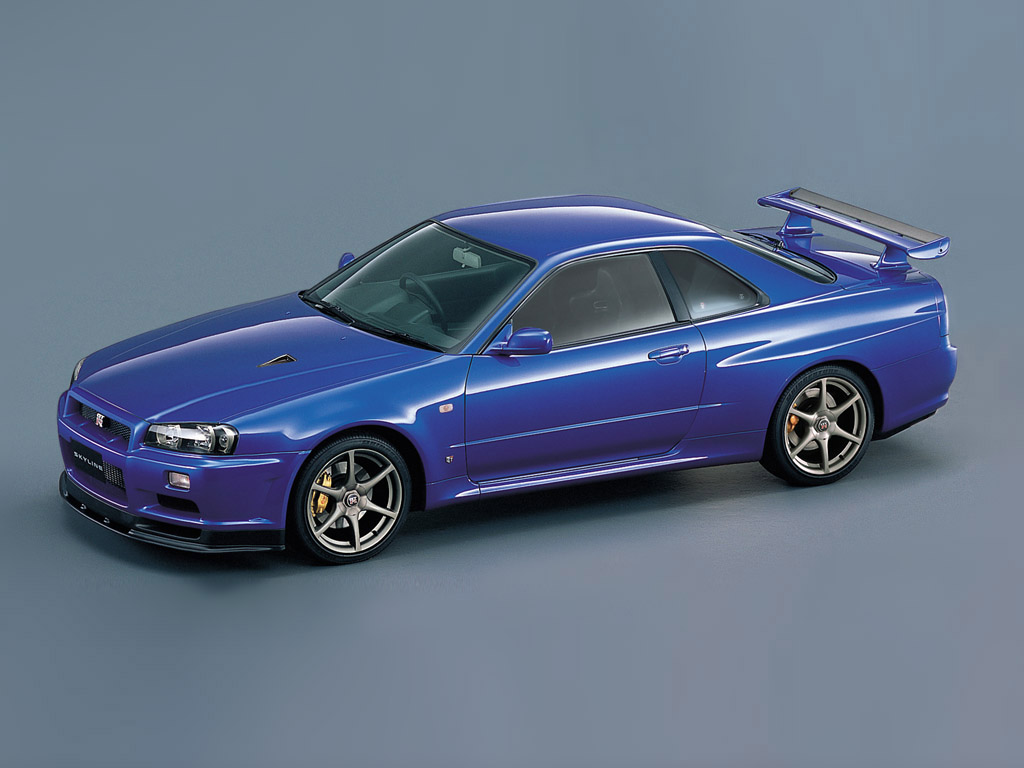1999→2002 Nissan Skyline GT-R
As one of Japan’s most celebrated performance cars, the Nissan Skyline GT-R has developed an immense racing pedigree that includes over 200 race wins, five consecutive championship wins in the All Japanese Touring Car Championships and the unofficial lap record for a production car at the world-famous Nurburgring. Every aspect of the Skyline GT-R, from the aerodynamics to body rigidity, has been fine-tuned through competitive racing and 11 years of intense testing, producing one of the best race-bred coupés on the market.
Stretching back to the mid-60s, the history of the Nissan Skyline GT-R began in earnest on 3 May 1965, when Prince, a Japanese car maker taken over by Nissan in 1967, entered a Skyline saloon in the second-ever Japanese Grand Prix. The Skyline’s standard four-cylinder engine had been replaced by a potent pushrod, carburettor-fed straight-six. Much to the delight of the home crowd, the ‘humble’ four-door Skyline was seen to overtake a Porsche 904GTS. The legend of the Skyline had begun.
As a ‘super-evolution’ of the model it replaces, the R34 GT-R is more advanced in every respect. Its body is stiffer and its aerodynamics package is further refined, and in V-spec features front and rear carbonfibre diffusers under the car, and dual wing adjustable aerofoil on the bootlid. Among the many technical refinements under the bonnet are twin ceramic intercooled turbochargers, which effectively eliminate turbo-lag. There is also more torque and better power delivery.
Weight saving measures have been utilised in many areas of the Skyline GT-R’s construction from the new design of light alloy road wheel, which saves over 7.7kg, to the use of light-weight audio speakers. Additionally, the front wings and bonnet continue to be produced in aluminium but the adoption of a new type of aluminium has saved about 1kg compared to the bonnet of the previous model. Finally, the rear diffuser is manufactured from lightweight carbon fibre.
The aerodynamic efficiency of the Skyline GT-R has evolved from lessons learned and information gathered on the racetrack. This not only ensures that the car incorporates all the latest visible aerodynamic aids to help smooth the airflow, but also includes hidden items such as the front and rear diffusers fitted under the floor pan. Under high speed driving, the parts that project below the body, such as the engine and rear axle, will normally produce lift however by covering the engine and rear differential, the airflow is smoother and less turbulent. In addition, the shape of the Skyline’s rear diffuser is designed to produce downforce and it also helps to cool the differential.
The RB26DETT in-line, 2568cc six-cylinder engine retains the previous 280PS at 6,800 rpm of its predecessor but has been developed to provide more torque for maximum driveability from lower rpm without compromising top end power. Quicker turbo response has also been achieved through the use of new turbochargers. Power is fed through a new six-speed close ratio Getrag gearbox.
The engine retains its general layout of straight six-cylinder configuration with twin overhead camshafts and four-valves per cylinder and twin turbochargers. As before, the throttle chamber has six individual throttle valves (one per cylinder) isolating each engine cylinder from the rest and acting like six individual single-cylinder engines.
ATTESA-E-TS PRO is Nissan’s electronically controlled four-wheel drive system specifically designed for road and racetrack use. Most other 4×4 systems have been designed for rally car or other off-road applications. The system employs a series of sensors and two centrally controlled wet multi-plate clutches to optimise torque split between the front and rear axles and was designed with the enthusiastic driver in mind. It ensures optimum traction and stability in acceleration, braking and cornering but without the penalty of unwanted understeer.
In normal driving conditions 100 per cent of the Skyline’s torque is directed to the rear axle. Speed sensors on all four wheels, longitudinal and lateral g-sensors, along with a throttle opening sensor and a brake light switch, analyse the vehicle’s traction and stability as well as the driver’s intent every one-hundredth of a second. Via a 16-bit processor, the system is able to send command signals to the central transfer unit or the Activity LSD (an intelligent, electronically controlled limited-slip differential), to within 10 one-thousandths of a second, sending up to 50 per cent of the engine’s torque to the front wheels. This ensures the car remains stable, even on low friction surfaces or during an oversteer moment when exiting a bend. Mechanically, the system uses hydraulically actuated multi-plate wet clutches in both the central transfer unit and the Active LSD. Drive is transferred to the front wheel via a chain, which drives the forward shaft.
The Skyline GT-R employs four-wheel steering to eliminate any excessive understeer, This system, called SUPER HICAS, features active control of the vehicle’s rate of yaw to adjust the rear wheel angle in order to improve stability when cornering. SUPER HICAS works first in assessing the driver’s intent. It does this by assessing not only the angle at which the wheels are turned, but also the rate at which they are being turned and the acceleration towards that rate. All this information is used to calculate the angle and rate at which the rear wheels should be steered.
In Detail
| type | Series Production Car |
| production years | 1999 – 2002 |
| built at | Japan |
| production | 3964 |
| price ¥/td> | ¥4,998,000 |
| engine | RB26DETT Inline-6 |
| position | Front, Longitudinal |
| aspiration | Natural |
| valvetrain | Belt-Driven DOHC, 4 Valves per Cyl |
| displacement | 2568 cc / 156.71 in³ |
| bore | 86 mm / 3.4 in |
| stroke | 73.3 mm / 2.9 in |
| compression | 8.5:1 |
| power | 205.8 kw / 276 bhp @ 6800 rpm |
| specific output | 107.48 bhp per litre |
| bhp/weight | 165.67 bhp per tonne |
| torque | 293 nm / 216.1 ft lbs @ 4400 rpm |
| redline | 8000 |
| body / frame | GT-BNR34 Unitary Steel Monocoque w/Carbon Fiber Doors & Hood, Roll Cage |
| driven wheels | AWD |
| front tires | 245/40W18 |
| rear tires | 245/40W18 |
| front brakes | Brembro Vented Discs w/4-Pot Calipers, Vacuum Assist & ABS |
| rear brakes | Brembro Vented Discs w/2-Pot Calipers, Vacuum Assist & ABS |
| front wheels | F 45.7 x 22.9 cm / 18 x 9 in |
| rear wheels | R 45.7 x 22.9 cm / 18 x 9 in |
| f suspension | MacPherson Struts w/Addional Link, Lower A-Arms, Coil Springs |
| r suspension | Mulitlink Setup w/Coil Springs, Tube Shocks, Anti-Roll Bar |
| curb weight | 1666 kg / 3674 lbs |
| wheelbase | 2665 mm / 104.9 in |
| front track | 1480 mm / 58.3 in |
| rear track | 1490 mm / 58.7 in |
| length | 4600 mm / 181.1 in |
| width | 1785 mm / 70.3 in |
| height | 1360 mm / 53.5 in |
| transmission | Getrag 6-Speed Manual |
| gear ratios | 3.827:1, 2.360:1, 1.685:1, 1.312:1, 1.000:1, 0.793:1 |
| final drive | 3.545:1 |
| top speed | ~249.40 kph / 155 mph |
| 0 – 60 mph | ~5.2 seconds |
| 0 – 100 mph | ~13.0 seconds |
| 0 – 1/4 mile | ~13.7 seconds |


